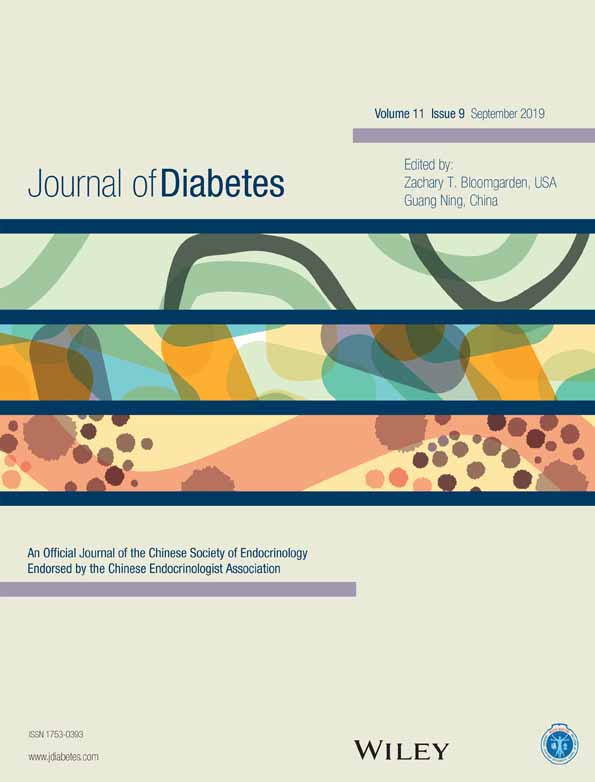Teriparatide (recombinant human parathyroid hormone [1-34]) increases foot bone remodeling in diabetic chronic Charcot neuroarthropathy: a randomized double-blind placebo-controlled study†合并慢性夏科神经关节病的糖尿病患者使用特立帕肽(重组人甲状旁腺激素[1-34])治疗可改善足骨重塑:一项随机双盲安慰剂对照研究
Abstract
enBackground
Currently, there is no consensus regarding the medical treatment of chronic Charcot neuroarthropathy (CN) of foot, except for effective off-loading. Because tarsal bones are predominantly trabecular, teriparatide may improve the macroarchitecture of foot bones in chronic CN.
Methods
People with diabetes and chronic CN were randomized to receive either 20 μg teriparatide or placebo subcutaneous daily for 12 months. Thirty-eight patients were screened and data were analyzed for 20. The maximum standardized uptake (SUVmax) value of 18F-FDG PET/CT the region of interest, bone turnover markers and foot bone mineral density BMD were determined. The primary outcome measure was change in SUVmax g/ml.
Results
Mid-foot was the most common region involved. After 12 months, SUVmax increased from 30.6 ± 14.7 to 37.7 ± 18.0 (P = 0.044) in the teriparatide group, but decreased from 27.6 ± 12.2 to 22.9 ± 10.4 with placebo (P = 0.148). The estimated treatment difference (ETD) was 11.9 ± 4.3 (95% CI 2.9, 20.8; P = 0.012). Similarly, P1NP increased with teriparatide (19.8 ± 5.5; P = 0.006) but decreased with placebo (−5.1 ± 3.8 ng/mL; P = 0.219); ETD was 24.8 ± 6.6 (95% CI 10.8, 38.8; P < 0.001) and CTX increased in both the teriparatide and placebo groups. Foot BMD increased by 0.06 ± 0.04 g/cm2 (P = 0.192) with teriparatide, but decreased by −0.06 ± 0.08 g/cm2 with placebo (P = 0.488; intergroup comparison, P = 0.096).
Conclusion
Teriparatide increases foot bone remodeling by an osteoanabolic action in people with CN.
Abstract
zh摘要
背景
目前除了有效的减负治疗外,对慢性足部夏科神经关节病(Charcot neuroarthropathy,CN)还没有公认有效的药物治疗方法。因为跗骨主要是小梁骨,特立帕肽可以改善慢性CN患者的足骨宏观结构。
方法
合并慢性CN的糖尿病患者被随机分配到每日皮下注射20μg特立帕肽治疗组或者安慰剂组,共治疗12个月。总共筛查了38名患者,对其中20名患者的数据进行了分析。测定了需要关注的区域使用18F-FDG PET/CT扫描后的最大标准化摄取值(maximum standardized uptake,SUVmax)、骨转换标志物以及足骨密度(bone mineral density,BMD)。主要结果是测量SUVmax g/mL的变化。
结果
中足是最常累及的部位。经过12月的治疗后,特立帕肽组的SUVmax从30.6 ± 14.7增加到37.7 ± 18.0(P = 0.044),但是安慰剂组却从27.6 ± 12.2下降至22.9 ± 10.4(P = 0.148)。估计治疗差异(estimated treatment difference,ETD)为11.9 ± 4.3(95% CI为2.9,20.8;P = 0.012)。同样,特立帕肽组的I型前胶原氨基端原肽(procollagen type 1 N-terminal propeptide, P1NP)增加了(19.8 ± 5.5;P = 0.006),但是安慰剂组却下降了(−5.1 ± 3.8 ng/mL;P = 0.219);ETD为24.8 ± 6.6(95% CI为10.8,38.8;P < 0.001),但是在特立帕肽组与安慰剂组中I 型胶原羧基末端肽(C-terminal telopeptide of type 1 collagen, CTX)都增加了。特立帕肽组的足部BMD增加了0.06 ± 0.04 g/cm2(P = 0.192),但是安慰剂组却减少了−0.06 ± 0.08 g/cm2(P = 0.488;组间比较,P = 0.096)。
结论
在CN患者中特立帕肽通过促进骨合成作用可改善足骨重塑。




